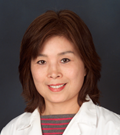Friday, August 04, 2006
(An exerpt from my upcoming book: The Help-Yourself Guide to Traditional Chinese Medicine)
The theories of traditional Chinese medicine are based on Chinese philosophy. Yin and Yang, perhaps the two Chinese terms most familiar to Western readers, are concepts developed by ancient Chinese philosophers to characterize all matter in the world. The ancient Chinese believed that everything in the world has both a Yin and a Yang. Anything that is upward, outward, light, active, warm and strong belongs to Yang. Anything that is downward, inward, dark, quiet, cold and weak belongs to Yin. The sun belongs to Yang and the moon belong to Yin, the sky to Yang and the ground to Yin, man to Yang and woman to Yin and so on.
These concepts were used by ancient Chinese doctors in the field of medicine to explain the physiological and pathological appearance of the body. For example, the blood and fluids of the body (because they are liquid) and the organs (because they are still) belong to Yin. However, the functions of organs belong to Yang because they are active. Parts of the body such as the back of the hand belong to Yang because they are on the outside, while other parts such as the palm of the hand belong to Yin because they are on the inside.
It is important to note that in the context of traditional Chinese medicine, the body is healthy when its Yin and Yang are balanced; if this harmony is disturbed, disease will result. This is because Yin and Yang are mutually dependent, causing symptoms to arise when the Yin is weak and theYang dominant, and vice versa. This is why traditional Chinese medicine refers to an excess of Yin as causing cold and an excess of Yang as causing heat.
Dr. Zhang

